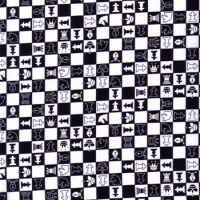The pattern we are going to discuss today is unique in many ways. First of all, every single tactical pattern we've talked about so far can happen both in an opening or in a middle game, but today's pattern usually happens only in an early opening stage. Secondly, most of the tactical textbooks ignore this pattern for some reason. Yes, you can find the games where this pattern happened, but I've never seen a book or a chess article devoted to this pattern. Maybe that explains why so many strong chess players fell for this trap.
I learned this pattern as a boy in a book devoted to the Queen's Gambit Accepted, where I found the next game:
(Just like in most of my articles I give you a chance to test your tactical skills, so the games are given as a Quiz. Please remember that you can always replay the whole game from the first move if you click "Solution" and then "Move list.")
I was so excited about this trap at that point in my chess career that I even switched from my favorite 1.e4 to 1.d4 hoping to lure someone into it. Needless to say it never happened. This variation of the Queen's Gambit Accepted is so well known, that it was really naive of me to hope to win a game this way. But it is a good idea to remember that your Rook can be trapped on its initial position if the long diagonal gets opened.
You might think that this pattern is too primitive for most chess players to fall for it. Think again! The next extraordinary game shows how the FIDE World Champion and one of the best players in the history of chess both missed it!!
Let me show you two more games where strong GMs fell for this little trick:
In conclusion, let me repeat that even though this pattern is very simple, still many strong players have fallen for it. So, watch out for the Rooks in the corner of the board, and if your opponent allows the pattern we analyzed today, don't miss your golden opportunity the way Kasparov did!







